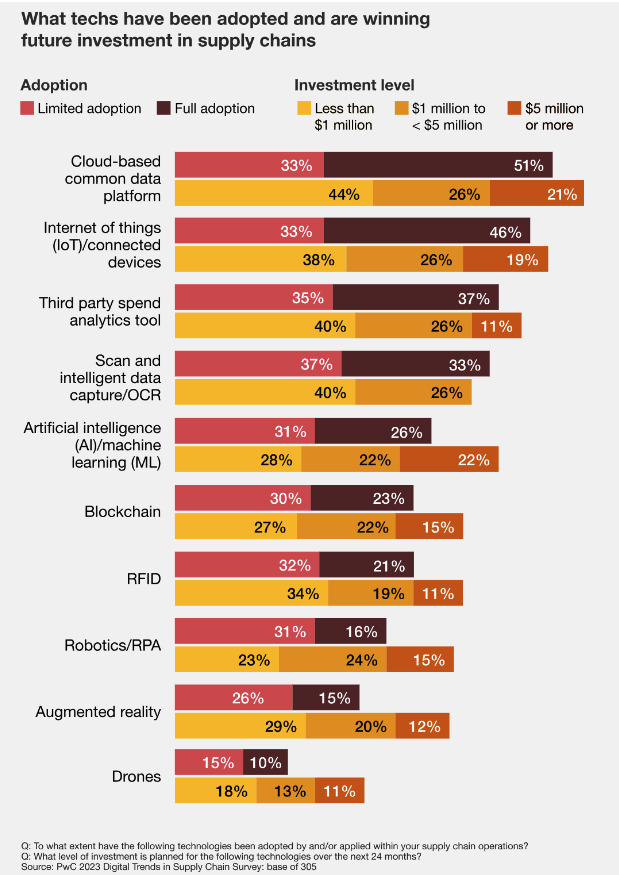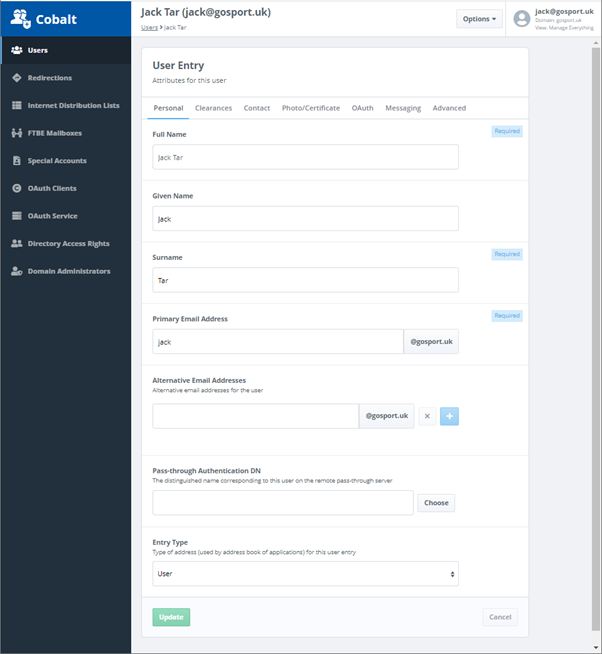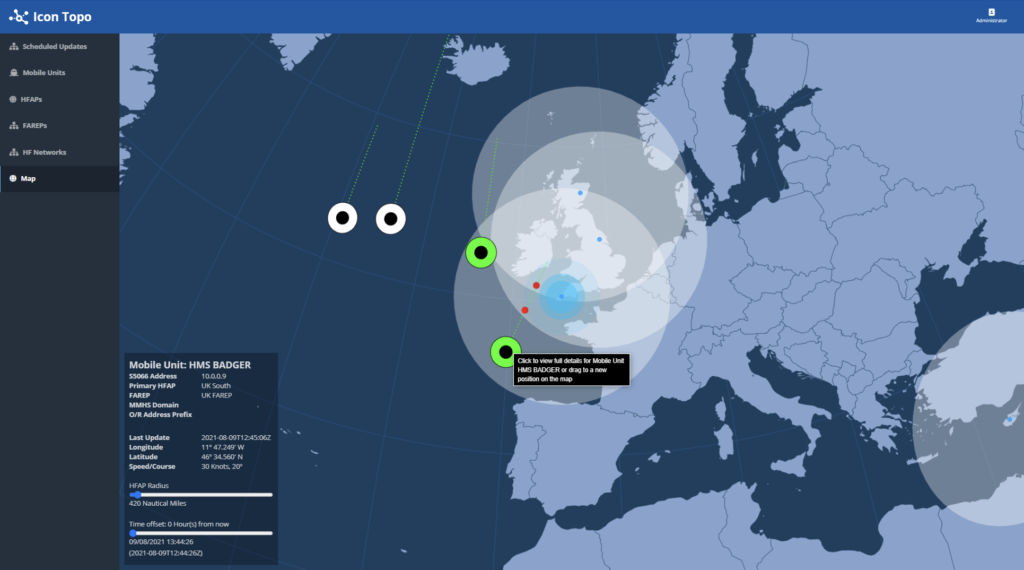As global supply chains continue to face significant disruptions, many businesses are turning to IoT to access greater visibility, reactivity, and streamlined operations.
Unforeseen geopolitical conflicts, economic pressures due to inflation and severe climate change events have
all contributed to
an uncertain and costly supply chain environment for companies worldwide in 2023.
To soften some of these impacts, and to work towards a more intelligent, forward-thinking form of supply chain management, industry leaders continue to turn to the benefits offered by the Internet of Things, or IoT.
By embracing IoT, your company can transform a scattered supply chain into a fully connected network. In doing so, you’ll be able to access a wide range of benefits like increased visibility and superior inventory management, whilst preparing your company’s foundations for the future of distribution.
The Future of Distribution: Recent IoT Impacts on the Supply Chain
Whilst it certainly represents the future of supply chain logistics, IoT adoption across multiple different industries has already happened. A recent survey by PwC found that in 2023,
46% of companies
have already invested in IoT to the point where it’s fully adopted by their supply chain, second only to cloud-based data platforms.

https://www.pwc.com/us/en/services/consulting/business-transformation/digital-supply-chain-survey/supply-chain-tech.html
When predicting the future of supply chain technology back in 2021, Gartner also claimed that
50% of organisations
will have invested in solutions that support AI and advanced analytical capabilities, like IoT, by 2024. They also predicted that by 2025, 50% of organisations will have employed a technology leadership role who will report directly to their chief supply chain officer (CSCO).
The existence and normalisation of a CSCO role itself evidences that supply chain management now plays a vital role in c-suite level decision-making for many global businesses. By predicting that CSCOs will soon be naturally reinforced by a senior tech leader in half of all organisations, Gartner has also shown that effective supply chain management today must be intertwined with new technologies like IoT.
To better understand the accuracy and importance of this prediction, it’s vital to explore the role IoT plays in supply chain management at present.
The Role of IoT in Supply Chain Management
IoT can be applied to practically every stage of a supply chain. In fact, due to its communicative nature, it’s advisable to apply IoT across an entire supply chain to embrace the benefits of a fully connected supply network.
The first, and perhaps most well-known, role of IoT within the supply chain is its capacity to provide real-time location tracking. This is often used to allow customers to track packages en route to their destination, but internally this feature also ensures companies have total visibility over all stages of distribution.
Increasing visibility means IoT can contribute to more accurate arrival time estimations. This also means businesses can quickly react to any unexpected issues that arise within their supply chain.
In doing so, IoT can help companies achieve greater risk mitigation, whilst simultaneously providing insights that can support contingency planning. One unique example of a company benefitting from IoT risk mitigation — within both supply chain management as well as customer experience — is Volvo. They now use IoT to track vehicle delivery as well as to provide
stolen vehicle tracking
for customers.
Monitoring can also extend to items in storage, which is particularly important for companies shipping perishable goods. In these instances, IoT allows for visibility and control over the environmental conditions of stored packages and equipment. Finally, individual shipments can also be located, speeding up the process of sourcing, identifying and managing goods when held in warehouses or distribution centres.
Many leading companies have already embraced IoT storage monitoring; for example, Ericsson recently implemented
digital asset-tracking solutions
in their new 5G smart factories to track critical asset locations.
The Benefits of Utilising IoT in Supply Chain Management
The following represent a handful of the key benefits your company could access by investing in IoT across your supply chain.
• New, Visible Opportunities
Many of the roles of IoT listed above contribute towards increased visibility over your supply chain. This level of visibility doesn’t just improve resilience and streamline operations; it can also provide insights that reveal entirely new opportunities.
These could include opening the door for automation, smart packaging that enables customers to interact directly with products, or unearthing potential improvements like route remapping that can further optimise your overall chain.
• Improved Communication Internally and With Customers
The data analysis capabilities offered by IoT allow your teams to better communicate with each other, as each team can access detailed information on the current nature of your supply chain.
This extends to the communication you can offer customers, enhancing their overall customer experience thanks to clear delivery times, the ability to provide alternative arrangements and quick resolutions to problems or disruptions.
• Meeting Regulations and Sustainability Requirements
IoT can provide a digital footprint of your supply chain, which is easier to optimise and can ensure you provide accurate reporting to meet ever-changing regulations.
Being able to optimise and streamline your supply chain can also mitigate unnecessary emissions, which can help your company work towards more sustainable operations. Gartner’s study found
over half of today’s customers
will only do business with companies who practice environmental and social sustainability, and the importance of engaging in sustainable supply chain management will only grow in importance in the coming years.
• A Cost-Effective Solution
Technology adoption, particularly of new or emerging technologies companywide, is often an expensive undertaking.
However, IoT represents a proven solution and a relatively affordable technology to implement (with future innovations
likely to lower costs further
), making it the ideal choice for budget-minded decision-makers.
How to Implement and Scale Supply Chain IoT
Effective IoT supply chain investment must be scalable, and accessing the above benefits demands that decision-makers solicit support from experts in the space.
Optimising an entire chain requires a reliable, proven MQTT Messaging Engine like
EMQ X
.
By using EMQ X, your business can connect over 50 million different devices, with the potential to handle tens of millions of concurrent clients at any one time. This makes EMQ X massively scalable, which is why it’s already the IoT supply chain management solution of choice for hundreds of leading companies worldwide.
Our IoT Erlang Solutions specialists have worked closely with EMQ X, with over 20 years of experience building real-time distributed systems. In addition to consulting on projects across any stage, we also offer regular health checks, EMQ X support services and monitoring to ensure your system remains reliable.
If you’d like to learn more about how to access Erlang Solutions supply chain optimisations through EMQ X, make sure to
contact our team today
.
The post
How IoT is Revolutionising Supply Chain Management
appeared first on
Erlang Solutions
.
chevron_right



